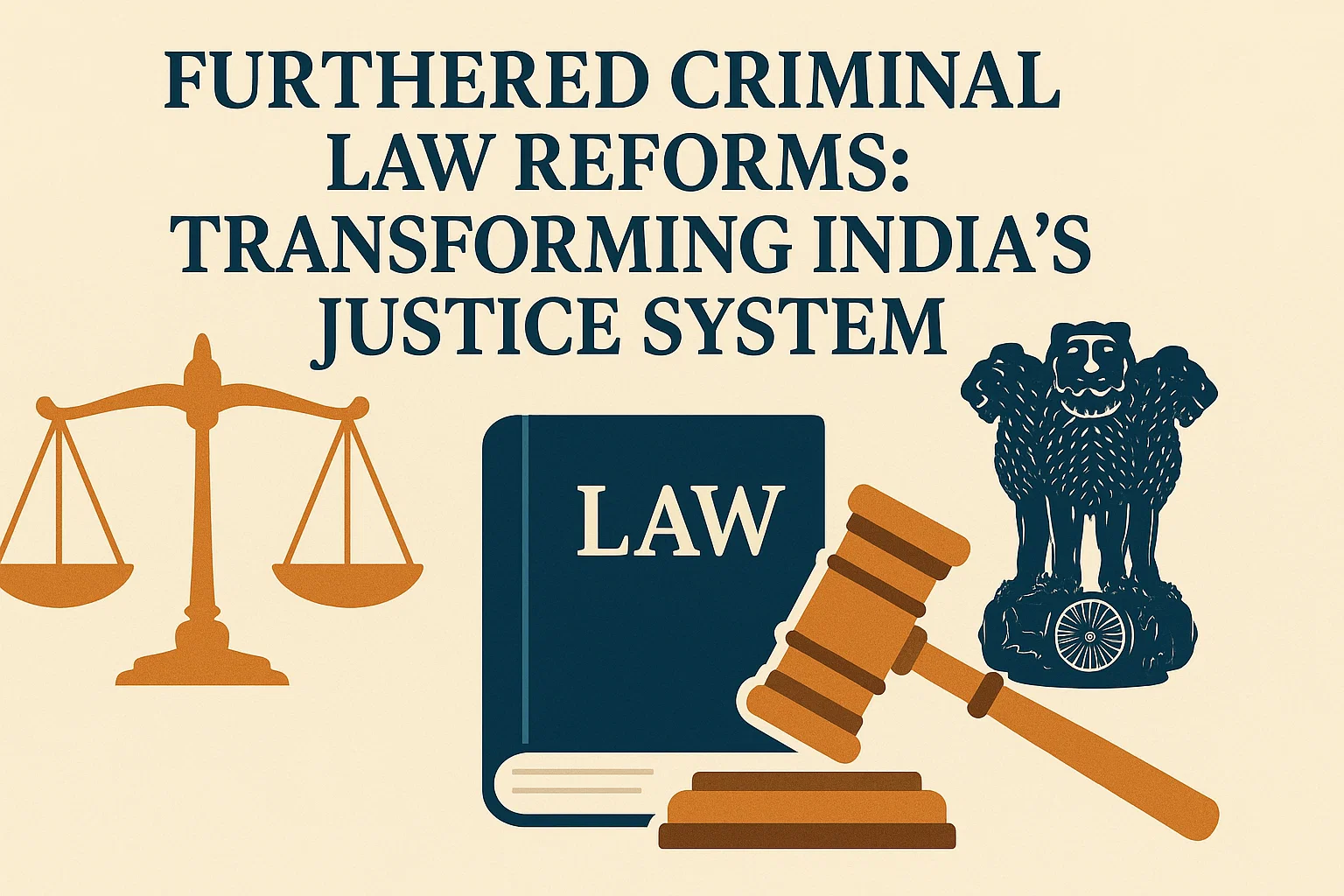Furthered Criminal Law Reforms: Transforming India’s Justice System
Discover how India’s new criminal laws—BNS, BNSS, and BSA—are transforming justice delivery. Learn about time-bound FIRs, forensic-based investigations, e-FIRs, and digital tools like eSakshya and e-Summon, aimed at building a faster, fairer, and citizen-first justice system.
Context:
India’s criminal justice system is undergoing a historic transformation. As part of the next phase of reforms, the government has announced a major initiative to ensure that First Information Reports (FIRs) are disposed of within three years, beginning in 2026. This step marks a decisive shift towards time-bound justice and accountability in policing.
What Are the Recent Reforms in Criminal Justice?
The three new criminal laws — Bharatiya Nyaya Sanhita (BNS), Bharatiya Nagarik Suraksha Sanhita (BNSS), and Bharatiya Sakshya Adhiniyam (BSA) — replace colonial-era legislations and are grounded in the principles of “citizen first, dignity first, justice first.” Together, they reflect a paradigm shift from punitive governance to people-centred justice.
1. Philosophical Shift: From Penal Action to Justice
The earlier colonial laws prioritised punishment and control. The new framework emphasises justice, human dignity, and citizen rights. It seeks to build a system that protects individuals while ensuring accountability for offenders.
2. Technology-Driven Investigation and Evidence
Investigations will now be guided by data and scientific methods rather than outdated coercive practices. This modernisation ensures transparency, reliability, and accuracy in criminal proceedings.
3. Mandatory Forensics
All offences punishable by seven years or more now require compulsory forensic investigation. This move strengthens the evidentiary base of trials and reduces the chances of wrongful prosecution.
4. Digital Recording and Videography
Every seizure during investigation must be digitally recorded, ensuring transparency. This eliminates tampering and enhances the credibility of evidence.
5. Technological Platforms: eSakshya and e-Summon
The use of digital platforms has revolutionised police and judicial processes.
-
eSakshya, already operational in Haryana, enables police to upload audio-visual evidence from crime scenes directly to a secure cloud system.
-
e-Summon simplifies the issuance and tracking of court summons, ensuring speed and accountability.
6. Enhanced Citizen Access: e-FIRs and Zero FIRs
Citizens can now file FIRs online, removing the need for physical visits to police stations.
The Zero FIR system allows anyone to register a complaint at any police station, regardless of jurisdiction. It must then be converted into a regular FIR within 24 hours. This provision particularly benefits women and vulnerable individuals, ensuring quick access to justice.
7. Addressing Modern Crimes
The new laws explicitly recognise emerging challenges like mob lynching, organised crime, terrorism, and cyber offences. By defining these crimes clearly, the legal system becomes more responsive to present-day realities.
8. Expediting Justice Delivery
-
Trial in Absentia: Courts can now proceed with trials even if an accused has fled abroad. This ensures fugitives cannot evade justice indefinitely.
-
System Integration: Police, prisons, courts, forensic departments, and prosecution wings are now digitally interconnected, creating a seamless ecosystem for data sharing and monitoring.
What Has Been the Impact?
Though implementation is still in its initial stages, early indicators suggest improved efficiency and accountability across the system.
Faster Investigation and Charge-Sheeting
Across India, 53% of charge sheets are now filed within 60 days of FIR registration, and 65% within 90 days. This acceleration demonstrates how digital tools and procedural streamlining are transforming investigation timelines.
Higher Conviction Rates
States such as Haryana have recorded a doubling of conviction rates to 80% since adopting the new provisions. This rise is attributed to stronger forensic evidence, technological tools, and reduced procedural lapses.
Massive Training and Sensitisation
Reform effectiveness depends on awareness and training.
So far, 14.8 lakh police personnel, 42,000 prison officers, 19,000 judicial officers, and 11,000 public prosecutors have been trained under the new framework. This widespread sensitisation ensures uniform implementation nationwide.
Adoption of Digital Tools
Technological integration is reshaping investigations. In Haryana alone, forensic examination has been conducted in over 96% of cases, reflecting how evidence collection is becoming more scientific and standardised.
Conclusion
The move towards time-bound FIR disposal signifies more than administrative reform — it marks a cultural transformation in India’s justice delivery system. By combining citizen-centric values, scientific investigation, and digital efficiency, the new criminal laws are making justice faster, fairer, and more transparent.
If sustained with robust training, accountability, and technological innovation, these reforms will not only enhance conviction rates but also restore public trust in the rule of law. Timely justice deters crime, strengthens democracy, and reflects a system truly built on the foundation of dignity and fairness.
Subscribe to our Youtube Channel for more Valuable Content – TheStudyias
Download the App to Subscribe to our Courses – Thestudyias
The Source’s Authority and Ownership of the Article is Claimed By THE STUDY IAS BY MANIKANT SINGH



